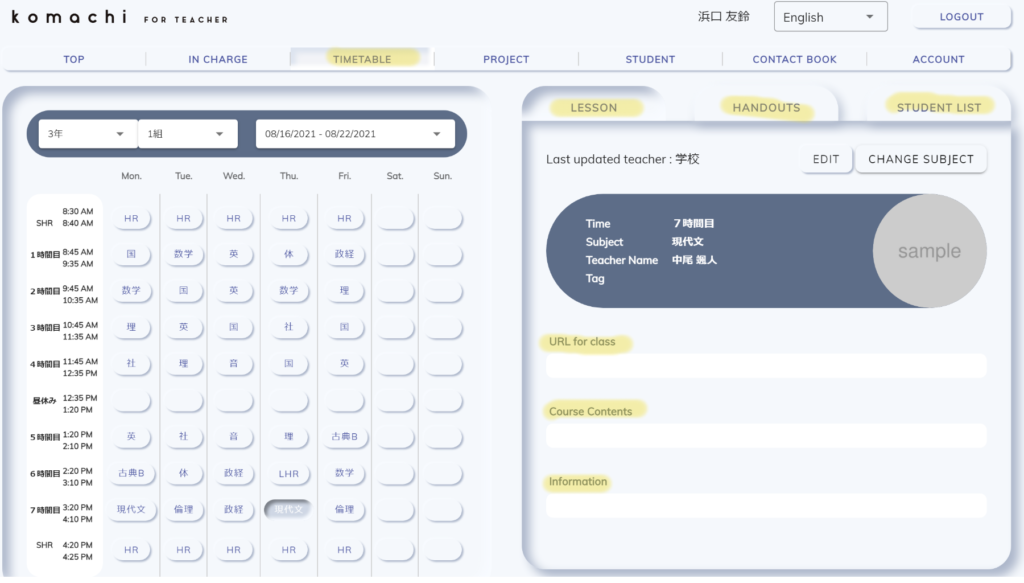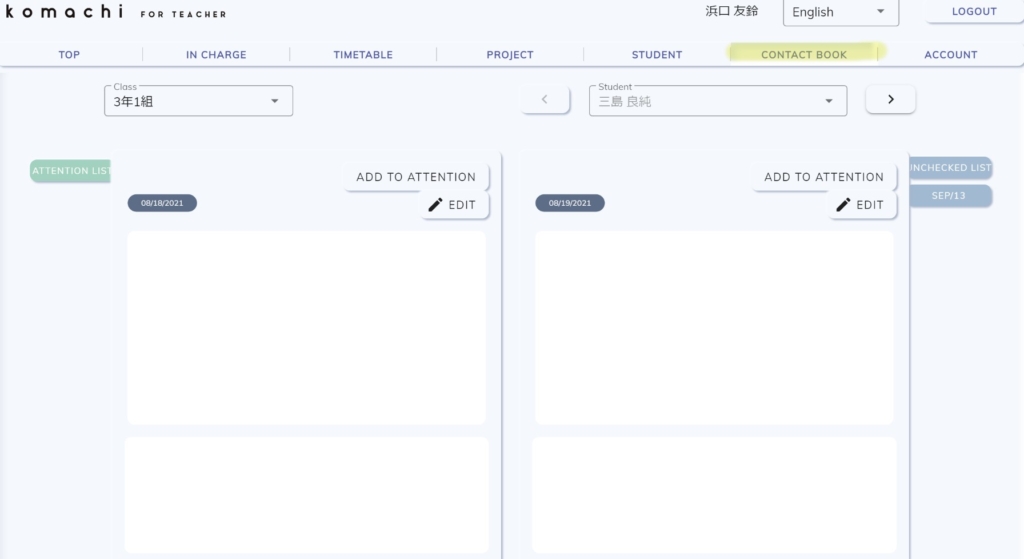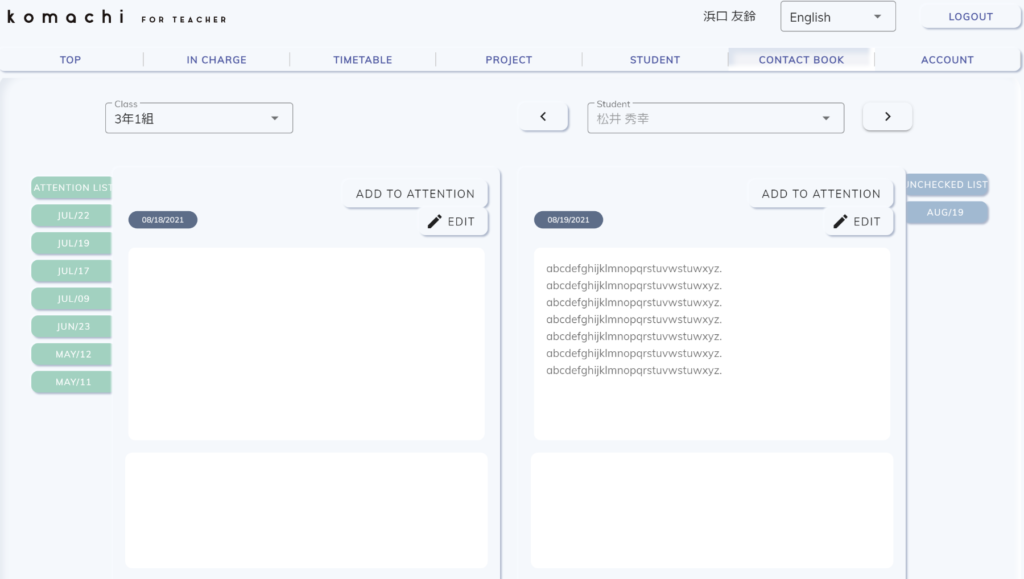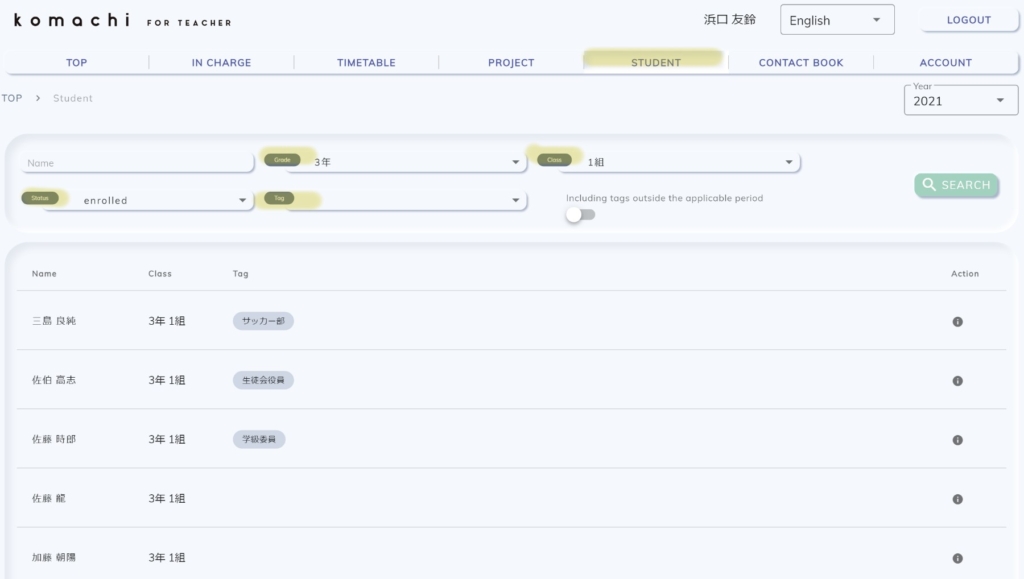Functions of komachi
CENTRALIZED COMMUNICATION TOOL
Using “Timetable" teachers and students can communicate with each other such as contacting for lessons, homework and submission of homework, attendance and a contact book exchange between students and teachers.
In addition, categories such as “school", “class", “club activities", “committee", etc.
“Notice" function allows teachers and students to be flexibly categorize and communicate. A teacher can even write url’s and share them here which can be accessed by students taking that course.
SCHOOL TIMETABLE

The timetable has both student and teacher oriented features. By clicking “frame" in the timetable you can write and convey the information to the class,
Information can be communicated to students.
Homework, attendance confirmation, class impressions and questions can be contacted through this “frame".
Each student has a different timetable. Even for elective courses on the same frame, you can change the lesson information that can be viewed by tagging the courses and each student individually.
This tagging function can be used as it is as a course history. There is also a function to confirm student attendance through the “frames" on the timetable.
CONTACT BOOK

The second main function of “Application Terminal komachi" is the contact book function. Feels like, “Class and students" instead of “teachers and students".
The contact book was designed as a book that is exchanged between “one class teacher" and “one student" instead of one teacher and one student.
Of course, there may be only one teacher who belongs to “one class", but it mitigates use of one-on-one SNS and email between teachers and students. Based on this, multiple teachers related to the “class" can be assigned.
The teachers who belong to the class can be freely set depending on the operation of the school, whether it is a homeroom teacher and a deputy homeroom teacher, or a homeroom teacher and an administrator.
STICKY NOTES IN CONTACT BOOK

The contact book has two types of sticky note functions.
The first is a “unreply sticky note". “Unreplied sticky note" automatically attaches a sticky note to articles that have not been replied to students by teachers. By clicking on the sticky note, the article can be moved with the corresponding date. After replying, note will be removed.
Another sticky note is the “concern tag".
Teacher can make it so the students can and cannot see the articles she writes. The “concern tag" is a tag that the teacher intentionally takes action and puts on.
If a student worries, teacher worries, and articles need not follow any chronological order.
Other functions

TAGGING
We have a database of teacher and student information in order to deliver the necessary information to the people who need it.
By tagging teachers and students individually in the database, class branching on the same frame and grouping of classes, club activities, committees, etc. are performed which helps in information transfer with relevant students and peers.
TIME TAG
“With timed function" tag function, classes, committees and club activities, courses taken, and of course life at school itself all have a “period".
In Komachi, by giving a “period" to the tag function,
It has a mechanism to keep a history of courses taken while saving the trouble of “removing tags".
With this function, it has the potential to be used for alumni association management depending on the school, such as “graduates of XX years".
TEMPLATE
It is used for creating a template when similar content is used. You can’t save handouts, but you can save the contents of your classes as templates in advance.